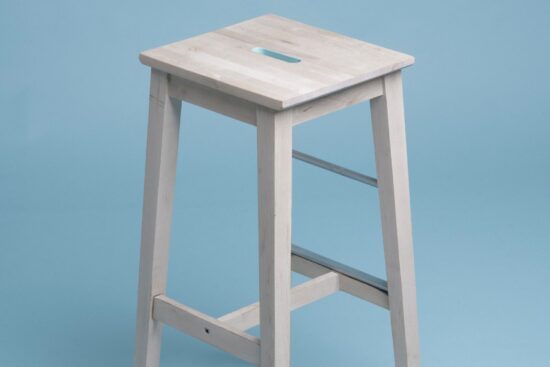

Ever found yourself scrambling to track down the latest version of a group project file? Or maybe you’ve hesitated before sending confidential research notes by email, worrying about privacy leaks or accidental loss?
These are daily headaches across universities everywhere—especially at places like Washington University in St. Louis where cutting-edge research and massive collaborations are the norm.
Here’s the upshot: The sheer scale and sensitivity of university data demand something more than scattered flash drives or risky file-sharing sites.
What if there was an answer that not only kept your information airtight but made collaborating easier than ever?
That’s where WUSTL Box steps in—a game-changer quietly underpinning everything from medical breakthroughs to late-night essay submissions.
I’m going to take you behind the scenes of this powerhouse storage solution: what it does differently, who relies on it most, and how its security features help keep campus life moving without a hitch.
Ready to find out how one platform can erase your biggest digital worries—and maybe even give your next big idea a running start?
The Heart Of Cloud Collaboration At Washington University
Instead of just tossing files into cyberspace, wustl box acts as a secure command center built precisely for the demands (and quirks) of academic life.
This means:
- Centralized Storage: No more scattered documents. Whether it’s PDFs brimming with lab results or giant image files for art history projects, everything lands in one organized spot.
- Real-Time Teamwork: Gone are those endless “Is this the right draft?” email threads. With co-editing tools baked right in, group members can jump into docs together—even if they’re all pulling all-nighters in different time zones.
- Tailored Permissions: Not every collaborator needs full access. Want an outside researcher to review data but not tinker with formulas? Easy done—granular controls let you fine-tune who sees what.
- Version History: Ever lost hours because someone accidentally deleted half a spreadsheet? Wustl box keeps snapshots so you can roll back mistakes faster than you can say Ctrl+Z.
- Smooth Integrations: It links up neatly with other must-haves—from Microsoft Office 365 for editing slides to Canvas when managing assignments—all while keeping workflows seamless.
The funny thing about cloud storage is that people tend to think it’s just about dumping files somewhere safe—but at universities like WashU, the stakes are higher.
Picture this: A biochemistry team juggling sensitive patient data and external partners. Or a teaching assistant rushing lecture notes out ahead of class while fielding last-minute edits from faculty miles away. These aren’t edge cases; they’re Tuesday mornings on campus.
All of which is to say: If collaboration feels messy anywhere else… at WashU, wustl box works overtime behind the curtain so no one drops the ball—or exposes critical info along the way.
The Security Layer That Makes All The Difference In Academic Data Management
| Feature | Why It Matters For You |
|---|---|
| Enterprise-Level Encryption | Keeps research findings (and personal details) under digital lock-and-key—even if accessed off-campus. |
| User Access Controls | You decide exactly who gets past which virtual doors—helpful when juggling guest collaborators or shifting teams around mid-project. |
| Regulatory Compliance (HIPAA/FERPA) | Makes sure anything containing student records or health info checks all required legal boxes automatically—no sweat over audits later. |
| Mobile Access & Two-Factor Authentication | Ditch desktop-only limitations while still making it tough for snoops to break in; ideal for students catching up between classes via phone or tablet. |
| Error-Proof Version Control | If someone overwrites vital notes by mistake? Restore earlier drafts instantly—without panic (or desperate calls to IT). |
If you’re worried about slipping up on security standards, here’s some peace of mind:
Washington University has invested heavily so that storing data on wustl box isn’t just convenient—it meets rigorous guidelines set by both federal law and internal university policy.
Take compliance concerns off your plate: From HIPAA-protected health studies through everyday assignment submissions protected under FERPA rules, using wustl box means every upload fits within those tight guardrails by default.
And should anything go wrong—a misplaced file link sent too widely perhaps—you’ll find support resources ready at hand thanks to ongoing training sessions and step-by-step guides offered directly by WashU IT staff (full documentation lives [here](https://it.wustl.edu/services/storage-collaboration/wustl-box/) if you’re curious).
To some extent, anyone handling digital files will eventually run into trust issues—is my stuff really safe here?
With wustl box anchoring operations across labs, classrooms, and administrative offices alike…at least on this front? You can finally stop holding your breath.
What Is WUSTL Box and Why Does It Matter?
Who hasn’t scrambled to share a massive file with classmates or colleagues—only to hit the dreaded “attachment too large” wall? Or spent hours searching through endless email threads for the latest version of a project? These everyday headaches are exactly what WUSTL Box aims to solve at Washington University in St. Louis.
Most students, researchers, and staff need one thing: simple, secure access to their files from anywhere. And not just storage—a workspace that doesn’t buckle when multiple people start editing, commenting, and moving documents around. That’s where this platform steps in.
But what does WUSTL Box actually offer beyond being just another cloud folder? How is it shaping workflows at WashU—from big-ticket research projects with strict privacy rules to daily admin tasks? Let’s break down the core features and why they matter if you study, teach, or work at WUSTL.
Core Features of WUSTL Box: Collaboration Without Chaos
Let’s skip the jargon—what’s under the hood here that sets wustl box apart from plain old cloud drives?
- Cloud Storage: No more shuffling USB sticks between labs or offices. Everything lives securely online—docs, spreadsheets, images—even those giant video presentations.
- Collaboration: Real-time co-editing means fewer “who has the newest file?” texts. Built-in comments keep feedback out of inboxes and attached right where you need it.
- File Sharing: Internal? External? Both work smoothly thanks to customizable permissions. You decide who gets view-only access and who can roll up their sleeves alongside you.
- Version Control: Made an error—or three—in your last edit? Version history lets you rewind any changes so nothing gets lost for good.
- Tight Integration: Want to work inside Office 365 or Google Workspace without switching tabs every two minutes? Box plugs into both, along with learning platforms like Canvas.
- No-Compromise Security: End-to-end encryption shields sensitive data (think HIPAA compliance) whether it’s sitting on servers or zipping across Wi-Fi at your favorite campus café.
- Pocket Access: Forgot your laptop but have your phone? The mobile app puts all your files—and all collaboration tools—in reach wherever you are on campus (or off).
The Way WUSTL Uses Box Every Day
So how do these features play out when deadlines loom or research heats up?
For many on campus, wustl box acts as the digital backbone:
– Course Material Distribution: Instead of juggling dozens of links each semester, faculty drop syllabi, readings, and assignments into shared folders students always know where to find.
– Team Projects & Admin Workflows: Student orgs hammer out event plans together; administrators wrangle committee docs—all in real time instead of waiting for someone’s reply-all email.
– Big File Transfers Made Easy: When a media project balloons past standard attachment limits (and let’s be honest—they always do), users rely on secure sharing instead of sketchy third-party sites.
The reality is that adoption isn’t uniform across departments—some go all-in while others tread carefully due to data sensitivity concerns—but usage keeps growing as more university systems sync directly with Box.
Sizing Up Security: Can You Really Trust WUSTL Box?
“Is my data really safe there?” That question pops up again and again—especially if you’re storing sensitive personal records or unpublished research findings.
– Encryption By Default: Files get encrypted before hitting the cloud—and stay protected even during transfers between devices.
– Granular Permissions & Two-Factor Authentication (2FA): No one outside your chosen circle touches sensitive folders unless you say so. Many users now face mandatory 2FA logins for extra protection against phishing threats.
– Compliance With Strict Standards: Health data is covered by HIPAA; student records are FERPA-safe—the IT team works overtime configuring settings that tick every regulatory box required by federal law.
– Integrated Monitoring Tools: Activity logs flag anything odd fast—a crucial safety net when grant money or private info hangs in the balance.
If something goes wrong—or just feels off—the IT help desk stands ready to walk anyone through troubleshooting steps before things spiral.
The Impact Beyond Numbers: Real-World Scenarios Powered By WUSTL Box
No glossy case studies splashed across billboards yet—but talk to people using wustl box, and stories stack up quickly.
A group tackling cross-departmental research found themselves swapping datasets late into weekends. Instead of fretting over unauthorized downloads (or misplacing key drafts), they used locked-down folders—with version control making sure no one overwrote irreplaceable analysis by accident. It wasn’t dramatic; it was simply smoother than before.
An instructor running remote courses saw engagement spike after course materials landed in organized folders everyone could open from phones en route to class—not buried in emails sent weeks ago.
If anything ties these scenarios together it’s this: what once took hours happens in minutes now—and digital paper trails mean less guesswork about who did what (and when).
Navigating Support For WUSTL Box Users On Campus
Nobody loves digging through dense manuals—or worse still, getting stuck mid-upload because nobody told them about quotas or permission glitches.
– Step-by-step Guides Online: From setting up shared links to restoring vanished files—it’s all documented by WashU IT.
– Live Help Desk Back-Up: If self-service stalls out, staff can hop onto chat or call lines for real-time troubleshooting.
– Workshops For Power Users: Ahead of new semesters, training sessions prep both faculty newbies and seasoned admins so productivity hits max speed early.
Getting answers shouldn’t slow down teaching or research momentum—and usually doesn’t here.
The Upshot On WUSTL Box: What Comes Next?
The funny thing about cloud platforms is how quietly they become invisible infrastructure until disaster strikes—or until a game-changing breakthrough emerges thanks partly to seamless collaboration tools like wustl box.
This service won’t win awards for flashiness—it will rarely make headlines at all—but ask around campus long enough and its impact shows everywhere from routine admin tasks through world-class medical breakthroughs relying on compliant digital vaults built right into everyday workflow tools.
If you need specifics like precise storage limits per user type or want department-level stats, best bet is reaching straight out to WashU IT itself (source). But if reliability matters more than buzzwords—and getting things done beats chasing tech fads—Box remains central for thousands here day in day out.
Why WUSTL Box Matters: Real Questions, Real Stakes
Ever tried to share a research file so big it crashed your inbox? Or scrambled at midnight to find the “official” version of last semester’s group project? If you’re anywhere near Washington University in St. Louis, this story isn’t just familiar—it’s the daily grind.
Here’s the upshot: people keep asking, “Is WUSTL Box safe for my lab data?” and “What if I need to collaborate outside WashU—does it play nice?” The funny thing about cloud storage is everyone loves convenience until security anxiety hits. And as remote work spreads through campuses like a cold in winter, having files scattered across email threads or personal drives just doesn’t cut it anymore.
WUSTL Box steps into this chaos with one simple pitch—your digital junk drawer becomes an organized vault where collaboration actually works. But there’s always a trade-off. Convenience invites questions about privacy and compliance (think HIPAA, FERPA). So let’s crack open what makes WUSTL Box tick—and whether it can really solve the headaches every student, researcher, and admin faces.
Inside WUSTL Box: Features That Actually Matter
You could list off features all day. Encryption here. Version control there. But on campus? What students and faculty want is simple:
- No more lost files.
- Collaboration that feels like Google Docs but fits university standards.
- A way to drag-and-drop your life onto any device.
All of which is to say: WUSTL Box offers secure cloud storage built right on top of Box.com—the same backbone trusted by Fortune 500s.
The platform pulls everything together:
– Drag that PowerPoint from your laptop; pick it up later from your phone between classes.
– Share giant video lectures with classmates or external researchers using links instead of risky attachments.
– Forget who edited what—version history lets you track changes down to the typo (and revert when someone inevitably messes things up).
– Canvas integration means assignments go straight from instructor folders into students’ hands without middleman confusion.
Still skeptical? Here’s where most get won over: WUSTL Box layers enterprise-grade encryption and customizable permissions on top of all that usability. You set who sees your thesis draft or restricts edits on sensitive administrative docs—with granular controls rivaling anything in commercial SaaS land.
How People Actually Use WUSTL Box at Washington University
You want real impact? Watch how quickly these use cases became non-negotiable:
Research Data Management: Labs sharing gigabytes of sensitive health data—securely compliant under HIPAA because IT bakes policy right into access settings.
Course Material Distribution: Professors upload readings once; students grab them anywhere—even mid-bus ride.
Project Collaboration: Student groups co-edit presentations live, leaving comments for late-night feedback loops.
Bureaucratic Lifeline: Admin teams replace endless paper trails with shared digital folders that stay updated in real time.
The problem is not every department leans in equally hard—a lot depends on local culture (some still hoard PDFs on dusty desktops).
And let’s talk numbers even if WashU keeps details close to its chest: adoption rates aren’t public, but walk around campus and you’ll spot faculty plugging training workshops during orientation week; help desks field daily calls about storage quotas (which are generous enough most folks never hit a wall); IT departments run regular tutorials for anyone feeling left behind by the tech curve.
Security, Compliance & Trust in WUSTL Box Cloud Storage
Here comes the classic worry—if everything lives in “the cloud,” what stops prying eyes or accidental leaks?
The short answer: end-to-end encryption protects files both stored (“at rest”) and moving between devices (“in transit”). Access controls mean only those you specifically invite touch critical documents—not random outsiders or even other students inside WashU unless they’re given permission.
This matters because many use-cases deal with protected information—researchers handling patient records have legal obligations under HIPAA; instructors must shield grades per FERPA rules. All signs point to IT working overtime configuring default policies so nobody fumbles into trouble by mistake.
Add two-factor authentication atop your university login—that extra speed bump against hackers phishing credentials out of tired grad students after an all-nighter.
If You’re Still Not Sold… Case Studies From Campus Trenches
Direct stories don’t flood news feeds—data sensitivity usually locks away specifics—but here’s how these features play out day-to-day:
– A biology research team partners with another university—they share raw clinical trial data via tightly controlled folder permissions rather than shipping USB sticks cross-country.
– A professor running an online-only seminar uploads weekly modules; grad assistants leave inline comments directly inside docs so nothing gets lost in email clutter.
This isn’t theory—it reflects standard workflow for teams juggling deadlines while keeping compliance officers happy.
Navigating Support & Training With WUSTL IT Help Desk
Maybe none of this lands until something breaks—or you face one button too many setting folder permissions at 1AM before a funding deadline. Good news is support runs deep:
– Start with documentation (WUSTL IT hosts step-by-step guides tailored for common scenarios)
– Call or email the help desk; odds are they’ve fixed whatever bug/issue/error message before.
– In-person workshops roll out each term—especially handy when new cohorts arrive clueless but eager not to repeat past mistakes.
You’ll hear rumors that peer troubleshooting solves half the problems faster than official channels ever could—a testament to community learning as much as formal support structures themselves.
The Upshot For Anyone Using WUSTL Box Today
To some extent, every file solution promises ease—but rarely delivers trust plus flexibility at institutional scale like wustl box does for Washington University. It wraps security compliance around core workflows—from course materials handed out en masse, to confidential grant applications passed quietly between collaborators miles apart.
The question remains less whether adoption will continue growing—and more how soon old habits fade entirely off-campus machines.
The challenge now lies not just in tech setup but shifting mindsets across disciplines stubbornly clinging to legacy processes long after safer options exist right under their login screens.
If doubts linger about quota limits or process quirks—the first stop should always be IT support (not rumor mills).
As systems evolve and user needs change fast post-pandemic? Staying plugged into updates ensures no one falls behind—and no crucial data slips through cracks we stopped tolerating years ago.





